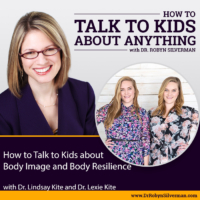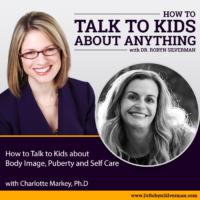Can TopShop Ultra Thin Mannequins Affect Body Image of Girls & Women? Dr. Robyn Silverman on Good Morning America
Can mannequin size have an effect on body image?
For some people, yes. Of course we all know that mannequins are not real. However, studies tell us that when girls and women are repeatedly exposed to very thin body standards in the media, on models or on mannequins, it can affect their body image, self esteem and eating practices—and interestingly, even their pension to buy.
The reality is that mannequins don’t just sell clothes. They inform beauty ideals, weight standards and fashion trends that tell people what they should aspire to in order to be considered beautiful and valuable in today’s society.
While mannequins have changed some over the years to be more inclusive in terms of ethnicity, the same can not be said about the size of the mannequins—that has largely stayed the same and reflects the standards of thinness put out by Hollywood and the fashion industry.
Why did this mannequin look so thin when it was said to be an American size 4/6?
A 4/6 looks different on different people depending on their body shape and height. This mannequin, by Topshop’s own admission, is taller than the average woman and therefore, proportionally, looks thinner. Specifically, the mannequin is 6 feet tall and a size 4/6 when an average American woman is 5’4” and a size 12/14. The difference can seem enormous.
It’s important to note that, for some people, the body size and proportions of this mannequin are similar to their own. I don’t feel that all thin mannequins and thin models should be replaced by larger-sized mannequins and models. I feel that we should have more diversity in mannequin body size from thin to plus size, petite to tall. Everyone wants to be represented. And while we can’t please everyone, having more than just one shape, size and color represented in the stores could go a long way.
Why don’t more stores use more variation in their mannequins?
Body size is still one of the most stigmatized aspects of the fashion industry which still believes, generally speaking, that clothes must be displayed on thin models and mannequins if they are to sell. This is actually a myth. Studies actually suggest that women are much more likely to buy when clothes are displayed on mannequins that more closely represent them.
Topshop also mentioned that a thinner mannequin is easier to dress– and get the clothes on and off. Other retailers and designers reveal that the taller, thinner mannequins have more presence in their stores and allow the clothes to hang more desirably.
Why was it important for Ms. Berry to speak out?
It was important for Ms. Berry to speak out because first, it shows that no girl or woman is alone in her frustration about size stigma in fashion and second, it shows that when we speak out, we may be heard. And maybe, just maybe, we even can set some pivotal changes into action.



 spliced for time-sake and the initial sentence didn’t exactly reflect how I feel about the possible effects of mannequin size on body image. Whoops! So let me clarify! I do not feel that exposure to thin mannequins leads to poor body image. I do feel that repeated exposure to very thin models, very thin mannequins and messaging about the merits of dieting and thinness can have effects on the body image of many girls and women (my original quote). You’ll see more on my view below!
spliced for time-sake and the initial sentence didn’t exactly reflect how I feel about the possible effects of mannequin size on body image. Whoops! So let me clarify! I do not feel that exposure to thin mannequins leads to poor body image. I do feel that repeated exposure to very thin models, very thin mannequins and messaging about the merits of dieting and thinness can have effects on the body image of many girls and women (my original quote). You’ll see more on my view below!













